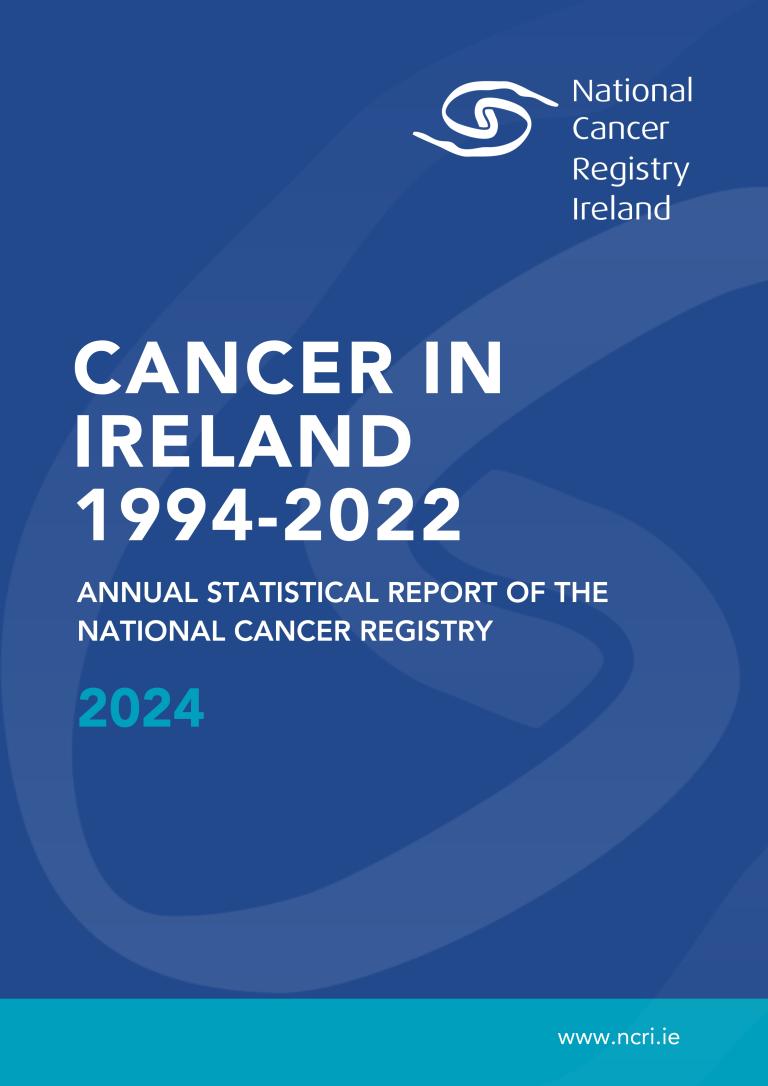Cancer in Ireland 1994-2022: Annual statistical report of the National Cancer Registry (2024)
National Cancer Registry of Ireland (NCRI) annual report for 2020-2022 examines variation in cancer incidence and survival across new health regions.

In anticipation of the full implementation of the six new health regions in early 2025, the NCRI annual report on national cancer statistics has, for the first time [1], examined cancer incidence and survival [2 - 5] across these six geographies for the four most common cancers in Ireland: lung, bowel (colorectal), breast and prostate cancer. These data are presented alongside national statistics providing an annual update on the status of cancer in Ireland.
In Ireland as a whole, an average of 41,654 tumours were diagnosed each year during 2020-2022. The majority of these (24,200) were potentially life-changing invasive cancers requiring extensive treatment. On average 9,800 people died each year from cancer during 2020-2022. One in five deaths were due to lung cancer.
Considering the six new health regions, the majority (60%) of all invasive cancers diagnosed during 2020-2022 occurred in the three eastern geographical areas (Dublin and North East, Dublin and Midlands, and Dublin and South East). Compared to the national average, the lung cancer incidence rate was higher in Dublin and Midlands, and lower in Dublin and South East. By contrast, the rate of prostate cancer was higher in Dublin and South East, but lower in Dublin and North East.
The proportion of people diagnosed during 2009-2018 and surviving at 5-years following diagnosis was lower than the national average for those living in the Mid West for colorectal, lung, and female breast cancer. Five-year survival for prostate cancer was also lower than the national average for people resident in the Dublin and North East region at the time of their diagnosis.
The report also found that, in Ireland as a whole, the number of people living with and beyond cancer continues to grow with an estimated 220,700 people who had been diagnosed with cancer still alive at the end of 2022 (about 1 in 23 of the Irish population).
Footnotes
[1] Previous annual statistical reports have documented differences in cancer incidence and outcomes by geographic regions such as the original health boards and former HSE areas (2002, 2004 and 2008).
[2] The HSE health regions were not in existence during the diagnosis period (2009-2018) examined for cancer survival, so the findings relate to the geographical regions where cases resided at diagnosis rather than the current health service administrations in place for those regions.
[3] The diagnosis period examined (2009-2018) coincided with the programme of centralisation of publicly funded cancer services, in particular surgical services to eight adult high-volume specialist centres where timing of implementation may have varied across the six regions.
[4] Each of the six individual regions forms a part of the national total where survival estimates in the larger regions with more cases and bigger populations will be more weighted towards national average survival, whereas smaller regions with less cases have more uncertainty (or wider confidence intervals) around survival rates.
[5] Late stage at diagnosis and concurrent illness will predispose to poorer survival. These estimates do not adjust for stage, comorbidities, cancer case-mix and socioeconomic indicators which vary across regions.
Share this page